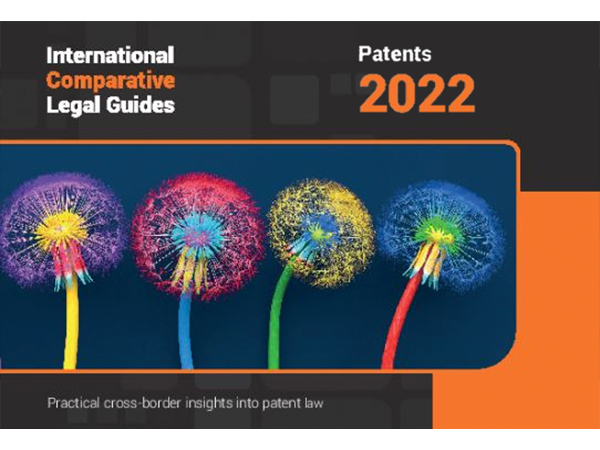
Intellectual Property
Viewpoints
Filter by:
PTAB Invalidates Two Cisco Patents Found Valid and Infringed at the ITC
June 14, 2017 | Blog
The Patent Trial and Appeal Board (“PTAB”) issued Final Written Decisions regarding Cisco’s U.S. Patent Nos. 6,377,577 (the “’577 Patent”) and 7,023,853 (the “’853 Patent”) on May 25, 2017 and U.S. Patent No. 7,224,668 (the “’668 Patent”) on June 1, 2017.
Read more
Amgen v. Sandoz: The Supreme Court’s First Biosimilars Ruling
June 14, 2017 | Blog | By Thomas Wintner, Joe Rutkowski
In a unanimous decision issued on June 12, 2017, the Supreme Court for the first time interpreted key provisions of the 2010 Biologics Price Competition and Innovation Act (“BPCIA”).
Read more
Pumping Up Exceptional Cases Under the Octane Fitness Standard
June 13, 2017 | Blog | By Andrew DeVoogd
A flurry of activity from various courts this past week on “exceptional cases” under Section 285 of the Patent Act provided notable guidance for practitioners and patent owners, with a particular emphasis on the motivation and conduct of the litigants.
Read more
Supreme Court Overrules and Rewrites 25 Years of Federal Circuit Law on Patent Exhaustion
May 31, 2017 | Blog | By Andrew DeVoogd
In keeping with recent erosion of patent rights, patent owners’ power to control the post-sale use and sale of their patented products was severely limited this week by the U.S. Supreme Court in the highly anticipated case regarding the patent exhaustion doctrine, Lexmark Int’l, Inc. v. Impression Prods., Inc., No. 15-1189.
Read more
The DTSA and Inevitable Disclosure
May 30, 2017 | Blog | By Michael Renaud, Nick Armington
A recent decision in the Northern District of Illinois gave life to the inevitable disclosure doctrine under the Defend Trade Secrets Act.
Read more
Patent Litigation Venue: Supreme Court Clarifies Venue Statutes in TC Heartland v. Kraft Foods.
May 24, 2017 | Blog | By Matthew Hurley, Brad M Scheller, Serge Subach
The U.S. Supreme Court announced its ruling in TC Heartland v. Kraft Foods Group Brands LLC on May 22, 2017, a patent infringement case that has garnered national attention for its implications on venue.
Read more
You Can Not Claim What you Don't Possess - Federal Circuit Holds Fiber Optic Claims Invalid under Section 112
May 18, 2017 | Blog | By John Bauer, Peter Cuomo
On May 10, 2017 and following a Patent Trial and Appeal Board (PTAB) reexamination decision upholding certain claims, the United States Court of Appeals for the Federal Circuit ruled in Cisco Systems, Inc. v. Cirrex Systems, LLC that all of the appealed claims of a fiber optic patent held by Cirrex are invalid for lack of a written description support required by 35 U.S.C. § 112.
Read more
Federal Circuit Expands Scope of Prosecution Disclaimer to IPR Proceedings
May 17, 2017 | Blog | By Andrew DeVoogd
In its opinion in Aylus Networks, Inc. v. Apple Inc., the Federal Circuit expanded the scope of prosecution disclaimer to statements made by a patent owner during Inter Partes Review (IPR) proceedings.
Read more
Amgen Sues Coherus Under BPCIA After Completing Patent Dance
May 17, 2017 | Blog | By Thomas Wintner, Joe Rutkowski
On May 10, 2017, Amgen filed a complaint in the District of Delaware asserting that, under section 35 U.S.C. § 271(e)(2)(C)(i) of the Biologics Price Competition and Innovation Act (“BPCIA”), Coherus infringed Amgen’s U.S. Patent No. 8,273,707 (the “’707 patent”) by filing an abbreviated Biologic License Application (“aBLA”) for a biosimilar version of Amgen’s Neulasta (pegfilgrastim) product.
Read more
USPTO eMod Project To Improve E- Filing/Managing Patent Applications
May 16, 2017 | Blog | By Christina Sperry
The U.S. Patent and Trademark Office (USPTO) is implementing eCommerce Modernization (eMod), as discussed at a Patent Quality Chat webinar on May 9, 2017.
Read more
Federal Circuit Clarifies the On-Sale Bar under AIA
May 9, 2017 | Blog | By Brad M Scheller
Last week the Federal Circuit in Helsinn Healthcare v. Teva Pharmaceuticals clarified the scope of the on-sale bar rule under the America Invents Act (AIA). The on-sale bar in general means that a sale or an offer to sale of an invention more than one year prior to the effective filing date of a patent qualifies as prior art.
Read more
Federal Circuit Rejects Board’s Understanding of Prior Art
April 28, 2017 | Blog | By Brad M Scheller, Catherine Xu
The Federal Circuit has now reversed the Patent Trial and Appeal Board’s decision in Synopsys, Inc. v. ATopTech, Inc. finding claims 1 and 32 of U.S. Patent No. 6,567,967 (the “‘967 patent”) as being “not supported by substantial evidence.”
Read more
Amgen v. Sandoz: The Supreme Court’s First Tussle with the BPCIA
April 27, 2017 | Alert | By Thomas Wintner
On April 26, 2017, the U.S. Supreme Court heard oral argument in the much-anticipated Amgen v. Sandoz case, representing the first time the Court has had to grapple with the Biologics Price Competition and Innovation Act (“BPCIA”) since this key law went into effect in 2010.
Read more
Federal Circuit to PTAB: No Short Cuts Allowed
April 25, 2017 | Blog | By Brad M Scheller
Today, the Federal Circuit, vacated-in-part and remanded the Patent Trial and Appeal Board’s obviousness determination regarding a Securus Technologies patent directed to systems and methods for reviewing conversation data for certain events and bookmarking portions of the recording when something of interest is said, finding that the Board failed to provide any explanation for its decision with respect to certain challenged claims.
Read more
Rules and Practice Tips Regarding Official Notice at the U.S. Patent and Trademark Office
April 21, 2017 | Blog
MPEP §2103(VI) states that when a rejection is imposed, the “Office action should clearly communicate the findings, conclusions and reasons which support them.” Examiners commonly satisfy this requirement by citing one or more prior art references allegedly teaching each of the limitations of a claim.
Read more
Fast Track Examination in the U.S. Patent and Trademark Office
April 19, 2017 | Blog | By William Geary
A variety of options are available to applicants to speed up patent application examination at the U.S. Patent and Trademark Office.
Read more
USPTO Launches PTAB Procedural Reform Initiative
April 18, 2017 | Blog | By Christina Sperry, Monique Winters Macek
On April 7, 2017, the U.S. Patent and Trademark Office (USPTO) announced it has launched an initiative to develop ways to improve Patent Trial and Appeal Board (PTAB) proceedings, particularly inter partes review proceedings.
Read more
Federal Circuit Limits Claim to Single Embodiment Because Only Enabling Description Provided in the Patent
April 12, 2017 | Blog | By Brad M Scheller, Anthony Faillaci
On April 6, 2017, the Federal Circuit reversed-in-part and affirmed-in-part the district court’s judgment of infringement and summary judgment for non-infringement of The Medicines Company’s (“MedCo”) patents-in-suit.
Read more
The Importance of Getting Inventorship Right: A Cautionary Tale in Two Cases
April 4, 2017 | Blog | By Ingrid A. Beattie, PhD
U.S. patent law elevates the importance of “the inventor” to an extent unseen in the rest of the world. Unlike many other countries, ownership of patent applications in the United States initially vests in the inventors listed on the application.
Read more
Five things academic scientists should know when pursuing their first patent application – Part II of V
March 30, 2017 | Blog | By Ingrid A. Beattie, PhD
Authorship is the currency of academia, and principle investigators are often generous with technicians and collaborators when listing authors on a paper. However, the identification of an “inventor” has legal significance in the U.S. and cannot be applied to those who have not made an inventive contribution.
Read more
Explore Other Viewpoints:
- Antitrust
- Appellate
- Arbitration, Mediation & Alternate Dispute Resolution
- Artificial Intelligence
- Awards
- Bankruptcy & Restructuring
- California Land Use
- Class Action
- Complex Commercial Litigation
- Construction
- Consumer Product Safety
- Cross-Border Asset Recovery
- Debt Financing
- Direct Investing (M&A)
- Diversity
- EB-5 Financing
- Education & Nonprofits
- Employment
- Energy & Sustainability
- Environmental Enforcement Defense
- Environmental Law
- FDA Regulatory
- Federal Circuit Appeals
- Financial Institution Litigation
- Government Law
- Growth Equity
- Health Care
- Health Care Compliance, Fraud and Abuse, & Regulatory Counseling
- Health Care Enforcement & Investigations
- Health Care Transactions
- Health Information Privacy & Security
- IP Due Diligence
- IPRs & Other Post Grant Proceedings
- Immigration
- Insolvency & Creditor Rights Litigation
- Institutional Investor Class Action Recovery
- Insurance & Financial Services
- Insurance Consulting & Risk Management
- Insurance and Reinsurance Problem-Solving & Dispute Resolution
- Intellectual Property
- Investment Funds
- Israel
- Licensing & Technology Transactions
- Life Sciences
- Litigation & Investigations
- M&A Litigation
- ML Strategies
- Medicare, Medicaid and Commercial Coverage & Reimbursement
- Mergers & Acquisitions
- Patent Litigation
- Patent Prosecution & Strategic Counseling
- Pharmacy Benefits and PBM Contracting
- Portfolio Companies
- Privacy & Cybersecurity
- Private Client
- Private Equity
- Pro Bono
- Products Liability & Complex Tort
- Projects & Infrastructure
- Public Finance
- Real Estate Litigation
- Real Estate Transactions
- Real Estate, Construction & Infrastructure
- Retail & Consumer Products
- Securities & Capital Markets
- Securities Litigation
- Special Purpose Acquisition Company (SPACs)
- Sports & Entertainment
- Strategic IP Monetization & Licensing
- Tax
- Technology
- Technology, Communications & Media
- Technology, Communications & Media Litigation
- Trade Secrets
- Trademark & Copyright
- Trademark Litigation
- Value-Based Care
- Venture Capital & Emerging Companies
- White Collar Defense & Government Investigations
- Women's Health and Technology



